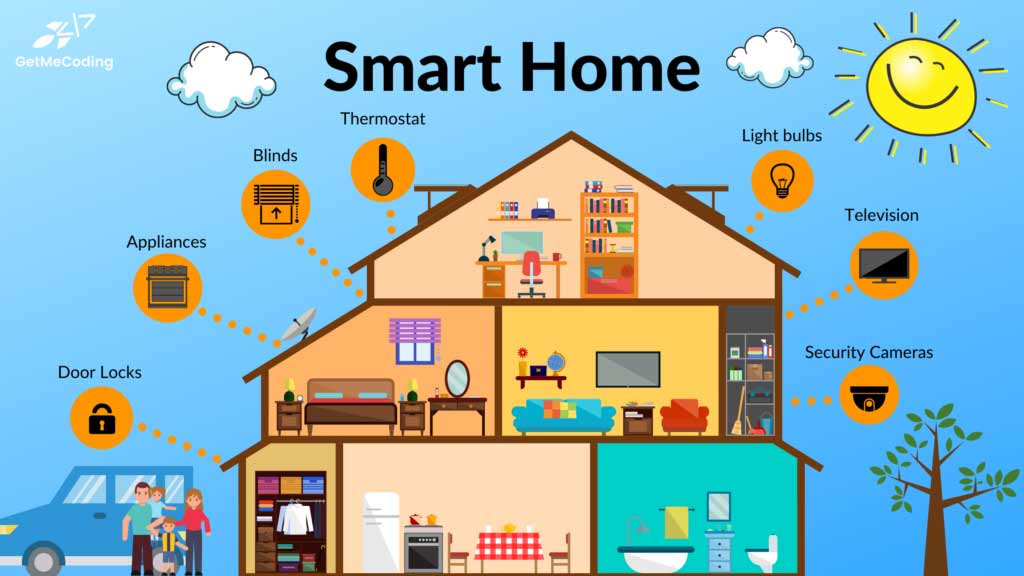Introduction
Imagine walking into your home after a long day and having the lights automatically brighten to your preferred level, your favorite music starts playing softly, and the thermostat adjusts perfectly to your ideal temperature — all without lifting a finger. What once belonged in science fiction is now an everyday reality, thanks to the rapid rise of the Internet of Things (IoT).
IoT is transforming traditional “dumb” homes — those relying solely on manual switches, analog devices, and disconnected appliances — into sophisticated, intelligent living spaces that adapt, learn, and respond to your needs. This revolution isn’t just about convenience; it’s about creating safer, more energy-efficient, and highly personalized environments that improve quality of life.
As we advance deeper into the 2020s, smart home technology powered by IoT is becoming more affordable, accessible, and essential. This article explores how IoT reshapes our homes from simple shelters to brilliant hubs of innovation and connectivity, making everyday living smarter than ever before.
Part 1: Understanding IoT and Its Role in Smart Homes
What Is IoT?
The Internet of Things refers to the network of physical devices — “things” — embedded with sensors, software, and connectivity, enabling them to collect and exchange data over the internet. These devices communicate with each other and with cloud services, creating an interconnected ecosystem that can be remotely monitored and controlled.
In the context of smart homes, IoT encompasses everything from your smart thermostat and lighting to security cameras, appliances, and even your garden irrigation system. Each device acts as a node in a vast network, sharing real-time information and responding intelligently based on user preferences, environmental conditions, or external data.
How Does IoT Work in Smart Homes?
At the core of an IoT smart home is a layered structure:
-
Sensors and Actuators: These are the “eyes and hands” of the system, detecting motion, temperature, humidity, light levels, or open doors, and executing commands like turning lights on or adjusting the thermostat.
-
Connectivity: Devices use wireless protocols like Wi-Fi, Zigbee, Z-Wave, or Bluetooth to connect to each other and to central hubs or cloud platforms.
-
Cloud Computing and AI: The cloud stores vast amounts of data generated by devices, while artificial intelligence analyzes this data to predict needs, automate routines, and optimize performance.
-
User Interfaces: Smartphones, voice assistants (Amazon Alexa, Google Assistant, Apple Siri), and dedicated control panels let homeowners monitor and control their systems anytime, anywhere.
Key IoT Communication Protocols
To function seamlessly, IoT devices rely on several wireless communication standards:
-
Wi-Fi: The most common home networking technology, providing high bandwidth but higher power consumption.
-
Zigbee & Z-Wave: Low-power mesh networking protocols designed for smart home devices, offering reliability and extended range by relaying signals across devices.
-
Bluetooth Low Energy (BLE): Used for short-range communication, often for initial setup or specific low-power devices.
Popular IoT Devices in Smart Homes
Some common IoT devices you might find in a smart home include:
-
Smart thermostats: Learn your heating and cooling preferences to optimize energy use.
-
Smart lighting: Allows color and brightness customization, automation, and voice control.
-
Security systems: Video doorbells, smart locks, motion sensors, and alarms.
-
Appliances: Smart refrigerators, ovens, washers, and coffee makers.
-
Cleaning devices: Robot vacuums and lawn mowers.
-
Environmental monitors: Smoke detectors, carbon monoxide sensors, and water leak detectors.
-
Smart plugs and outlets: Make traditional devices remotely controllable and automatable.
How IoT Improves Daily Life and Household Management
The magic of IoT lies in the way it connects these devices into a unified system that learns your habits and preferences, offering:
-
Convenience: Automate repetitive tasks like turning off lights, locking doors, or adjusting temperature without manual input.
-
Security: Monitor your home remotely, receive alerts, and react in real-time to potential threats.
-
Energy Efficiency: Optimize energy use to reduce bills and environmental impact.
-
Personalization: Customize environments for different family members and times of day.
-
Health & Wellness: Monitor air quality, sleep patterns, and activity levels.
This is just the beginning. The next parts will dive deep into how IoT specifically revolutionizes home security, energy use, convenience, and more.
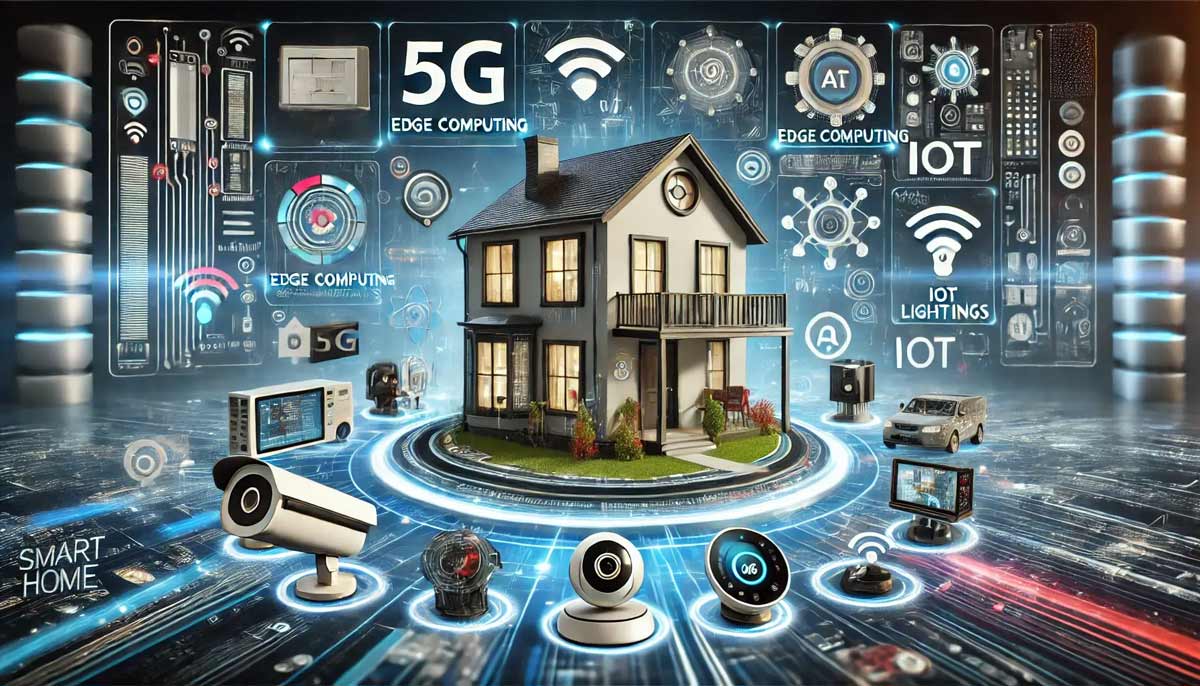
Market-Research-Growth-and-Trends-in-Smart-Home-Automation-DM-WebSoft-LLP-(1)
Transforming Home Security with IoT
Smart Home Security — A New Era of Protection
Home security has always been a cornerstone of comfortable living, but traditional security systems often came with limitations: fixed sensors, manual arming/disarming, limited coverage, and no remote access. Thanks to IoT, home security has evolved into a dynamic, intelligent, and highly responsive system that offers peace of mind like never before.
IoT-based security devices work together in an ecosystem, leveraging connectivity, AI, and real-time data to detect threats quickly, alert homeowners instantly, and sometimes even prevent incidents before they escalate.
Key IoT Security Devices and Features
1. Smart Locks
Traditional locks rely solely on keys or simple keypads, which can be lost, copied, or forgotten. Smart locks revolutionize access control by enabling:
-
Remote locking/unlocking via smartphone apps.
-
Temporary access codes for guests, cleaners, or deliveries.
-
Biometric authentication (fingerprint or face recognition) for enhanced security.
-
Integration with other devices, like security cameras or alarms, for automated responses.
Smart locks can log who enters and leaves your home and at what time, providing valuable insights and an audit trail.
2. Video Doorbells and Cameras
IoT-enabled video doorbells such as Ring or Nest Hello provide a live video feed of your front door, accessible remotely on your phone. They offer:
-
Two-way audio communication so you can speak with visitors or delivery personnel.
-
Motion detection and alerts when someone approaches your door.
-
Cloud storage for video recordings, accessible anytime.
-
Integration with smart locks to let trusted visitors in remotely.
Beyond the front door, smart security cameras can be placed around the home to cover blind spots, often featuring night vision, AI-powered person detection, and real-time alerts for suspicious activity.
3. Motion and Window/Door Sensors
These sensors detect unusual movement or unauthorized entry. When integrated into an IoT system, they:
-
Send instant notifications if triggered.
-
Automatically activate alarms, lights, or cameras.
-
Can be armed or disarmed remotely.
-
Work in mesh networks to cover large areas.
4. AI and Machine Learning for Threat Detection
One of the greatest advantages IoT security systems offer is intelligence. Modern devices use AI algorithms to:
-
Differentiate between regular activity (family members, pets) and potential threats.
-
Reduce false alarms caused by non-threatening triggers.
-
Learn patterns over time and adjust sensitivity.
-
Analyze video feeds to identify suspicious behaviors.
This reduces “alert fatigue” and ensures you’re only notified for meaningful events.
5. Remote Monitoring and Real-Time Alerts
All IoT security systems enable homeowners to monitor their property from anywhere in the world through apps or web portals. Features include:
-
Live video streaming.
-
Instant push notifications or SMS alerts.
-
Automated calls to emergency services in serious situations.
-
Collaborative access for family members or security professionals.
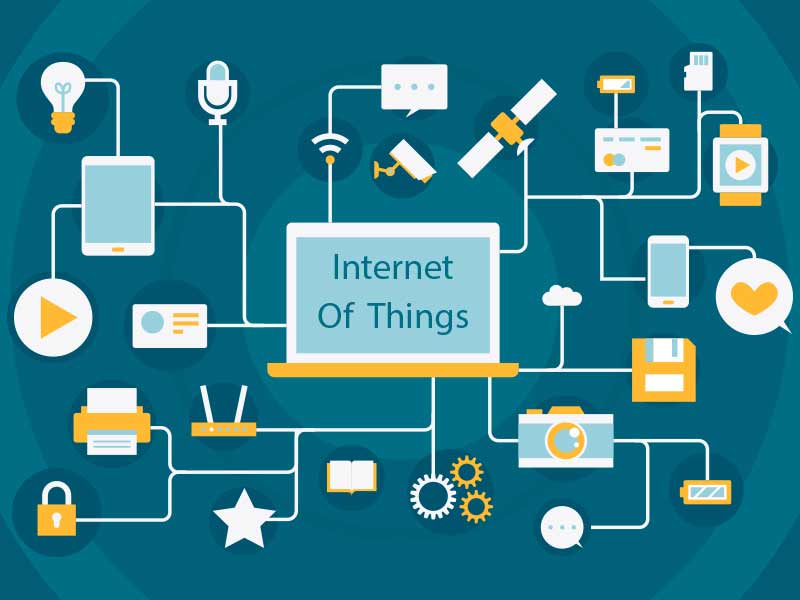
iot in smart houses
Case Study: How IoT Security Saved the Day
Consider a homeowner on vacation who receives a motion alert on their phone at 2 AM. The security camera shows an unknown person lingering near a side door. The homeowner remotely activates floodlights, triggering the intruder to flee. Meanwhile, a silent alarm notifies local authorities, arriving promptly to secure the property.
Such scenarios highlight how IoT security devices combine automation, AI, and connectivity to provide real-time protection beyond the capabilities of traditional alarms.
Benefits Beyond Security
IoT security devices often double as convenience tools:
-
Smart locks can automatically unlock when you approach.
-
Cameras help with package deliveries or identifying visitors.
-
Sensors can trigger lights to illuminate pathways at night.
-
Integration with other smart home systems offers holistic home management.
Challenges and Considerations
While IoT enhances security, it also introduces new challenges:
-
Privacy: Video and audio data need secure handling to prevent misuse.
-
Network Dependence: IoT devices require stable internet to function optimally.
-
Cybersecurity: Systems must be protected from hacking through strong passwords and firmware updates.
In summary, IoT-powered home security transforms passive protection into proactive, intelligent defense — making your home smarter and safer than ever before.
IoT and Energy Efficiency
The Energy Challenge in Modern Homes
Energy consumption in homes accounts for a significant portion of household expenses and environmental impact. Traditional appliances and systems often operate inefficiently — heating or cooling empty rooms, leaving lights on unnecessarily, or running outdated equipment that wastes power.
Enter IoT-powered smart devices, designed to optimize energy usage by learning your habits, responding to real-time conditions, and automating systems to maximize efficiency without sacrificing comfort.
How IoT Drives Energy Efficiency
1. Smart Thermostats — Intelligent Climate Control
Smart thermostats like Nest, Ecobee, and Honeywell revolutionize home heating and cooling by:
-
Learning your schedule and temperature preferences.
-
Automatically adjusting when you leave or return home.
-
Detecting when rooms are unoccupied and reducing heating/cooling accordingly.
-
Integrating weather forecasts to preemptively adjust settings.
-
Providing detailed energy reports and suggestions for savings.
Studies show smart thermostats can reduce heating and cooling energy use by up to 20%, significantly lowering utility bills.
2. Smart Lighting — Tailored Illumination
IoT smart bulbs and lighting systems offer multiple energy-saving features:
-
Motion sensors that switch lights off when rooms are empty.
-
Scheduling and dimming to use only as much light as needed.
-
Color temperature adjustment to match natural daylight and reduce eye strain.
-
Remote control and automation via apps and voice assistants.
LED smart bulbs consume far less power than traditional incandescent bulbs and can last 15-25 times longer, amplifying savings.
3. Smart Appliances — Efficient Operation
Smart refrigerators, washers, ovens, and dishwashers offer:
-
Energy usage monitoring so you understand consumption patterns.
-
Optimized run cycles that use less water and electricity.
-
Remote start/stop to operate during off-peak energy hours.
-
Alerts for maintenance issues to avoid inefficiencies.
For example, a smart washer might adjust water and energy use based on load size and soil level, minimizing waste.
4. Power Monitoring and Smart Plugs
Smart plugs and power strips let you track energy use of plugged-in devices and remotely turn them off when not needed. Combined with automation, they help eliminate “phantom loads” — energy drawn by devices in standby mode.
Some advanced systems offer whole-home energy monitoring, providing detailed breakdowns and actionable insights.
5. Data Analytics and Behavioral Insights
The real power of IoT in energy efficiency lies in data. Smart devices collect vast amounts of usage data, which cloud platforms analyze to:
-
Identify wasteful habits.
-
Suggest personalized efficiency improvements.
-
Enable demand-response programs that reduce consumption during peak grid times.
-
Integrate renewable energy sources and battery storage intelligently.
This continuous feedback loop empowers homeowners to take control of their energy footprint actively.
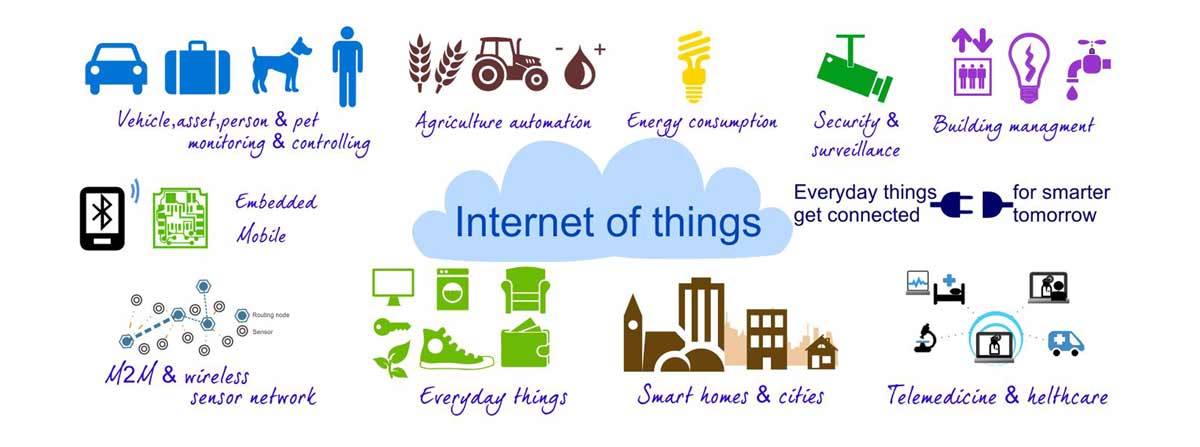
internet of things
Environmental Impact and Cost Savings
By optimizing energy use, IoT smart homes:
-
Reduce greenhouse gas emissions by lowering electricity and fuel consumption.
-
Decrease strain on power grids, supporting sustainability.
-
Save hundreds of dollars annually on energy bills.
-
Increase home value as energy efficiency becomes a key selling point.
Real-World Example
A family installs a smart thermostat and switches to smart lighting throughout their home. Over the first year, their energy consumption drops by 25%, and their monthly bills fall significantly. They receive monthly reports showing energy peaks and adjust behaviors accordingly, such as turning off devices when not in use.
Challenges and Best Practices
While IoT enables great energy savings, consider:
-
Ensuring devices are properly configured to avoid excessive use or conflicts.
-
Maintaining software updates for improved efficiency features.
-
Balancing automation with manual override for comfort.
In conclusion, IoT technology is a game-changer for home energy management, delivering financial, environmental, and lifestyle benefits that redefine what it means to live smart.
Comfort and Convenience — Automating Everyday Living
The Promise of a Seamlessly Automated Home
Imagine waking up in the morning as your coffee maker starts brewing automatically, your favorite playlist begins softly in the background, and the thermostat adjusts to your preferred temperature — all without you lifting a finger. This is the everyday magic IoT brings to your home: turning routine tasks into effortless experiences and creating an environment that intuitively supports your lifestyle.
Smart home automation goes beyond convenience; it transforms your living space into a responsive, personalized haven where comfort and efficiency coexist perfectly.
Core Components of Comfort-Focused IoT Automation
1. Voice Assistants and Smart Speakers
Devices like Amazon Alexa, Google Assistant, and Apple Siri serve as the nerve center for many smart homes. With simple voice commands, you can:
-
Control lighting, thermostat, entertainment systems, and more.
-
Set reminders, alarms, and calendar events.
-
Ask questions and get instant answers.
-
Manage routines that automate multiple actions at once.
Voice assistants simplify interaction and make technology accessible to all family members, including children and seniors.
2. Automated Lighting and Shades
Using IoT-enabled smart bulbs, dimmers, and motorized window shades, homeowners can:
-
Schedule lights and shades to adjust throughout the day.
-
Mimic natural daylight cycles to support circadian rhythms.
-
Respond automatically to occupancy sensors.
-
Adjust based on ambient light levels for optimal comfort and energy savings.
These subtle adjustments enhance mood, productivity, and overall wellbeing.
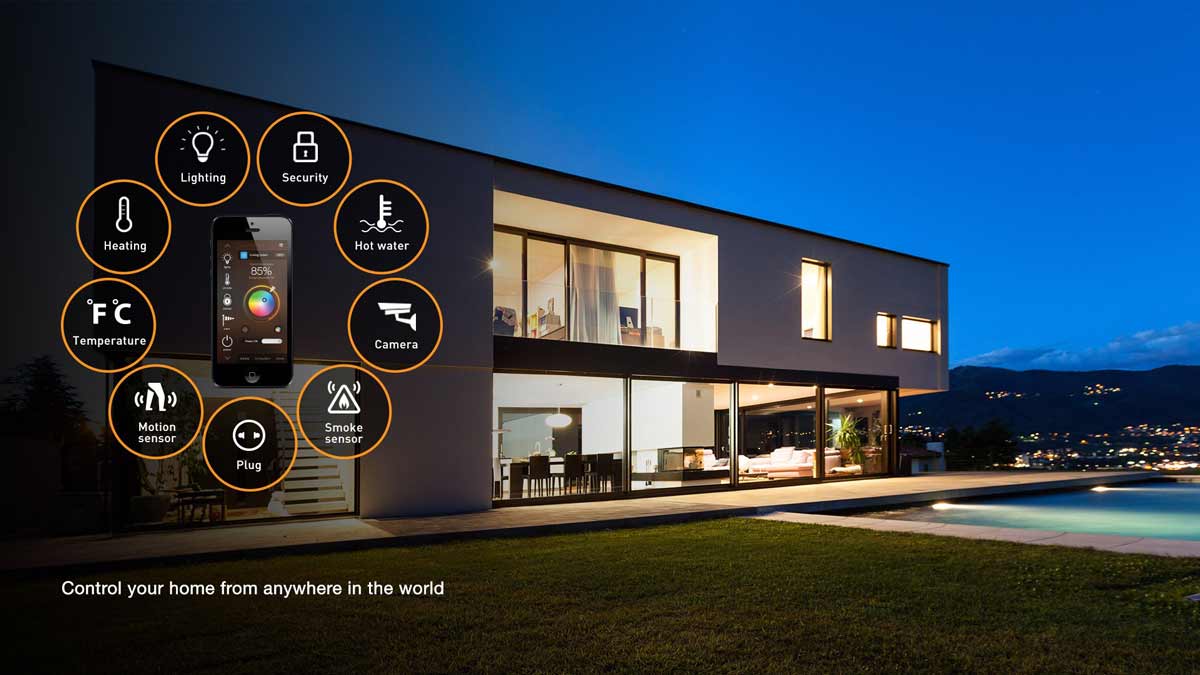
futurehomeshi_smart homes with IOT
3. Smart Climate Control Beyond Thermostats
Beyond heating and cooling, IoT devices enable:
-
Zoned HVAC systems that heat or cool specific rooms based on occupancy and preference.
-
Smart ceiling fans that adjust speed automatically.
-
Air purifiers that monitor and improve indoor air quality.
-
Humidity sensors that activate dehumidifiers or humidifiers as needed.
These features create a healthier, more comfortable environment tailored to your needs.
4. Intelligent Entertainment Systems
Smart TVs, streaming devices, and speakers connect to your IoT ecosystem to:
-
Curate playlists or streaming channels based on your preferences and time of day.
-
Sync multi-room audio for immersive experiences.
-
Automatically pause content when you leave a room or receive a call.
-
Integrate with lighting and blinds to create perfect viewing atmospheres.
Entertainment becomes a personalized and effortless joy.
5. Smart Kitchen Appliances
The kitchen is often the heart of the home, and IoT automates many of its tasks:
-
Smart refrigerators monitor inventory, suggest recipes, and alert for expiration dates.
-
Connected ovens and microwaves allow remote preheating and cooking monitoring.
-
Smart coffee makers prepare your favorite brew on schedule.
-
Voice-controlled faucets and lighting make cooking and cleaning more seamless.
These conveniences save time and enhance the cooking experience.
Setting Up Your Automated Routine
One of the most powerful features of IoT is creating “scenes” or “routines” — automated sequences triggered by events like time, location, or sensor input.
Example morning routine:
-
At 7 AM, bedroom lights gradually brighten.
-
Coffee maker starts brewing.
-
Thermostat adjusts to a comfortable temperature.
-
News briefing plays on smart speaker.
-
Shades open to welcome natural light.
These tailored routines reduce daily friction and start your day smoothly.
Benefits of Automation for Everyday Life
-
Time savings: Tasks happen automatically without manual effort.
-
Consistency: Enjoy your preferred environment every time without thinking.
-
Accessibility: Helps elderly or disabled individuals manage daily activities independently.
-
Energy efficiency: Automation ensures systems run only when needed.
-
Peace of mind: Know your home adjusts itself safely and predictably.
Challenges to Keep in Mind
-
Over-automation can feel intrusive; balance is key.
-
Ensure privacy settings are strong to protect personal data.
-
Choose interoperable devices to avoid compatibility issues.
-
Have manual overrides to retain control when needed.
Conclusion
The future of home living is smart, seamless, and deeply personalized. IoT-powered automation elevates comfort and convenience, turning your house into a truly responsive home that anticipates your needs and enhances your quality of life every day.
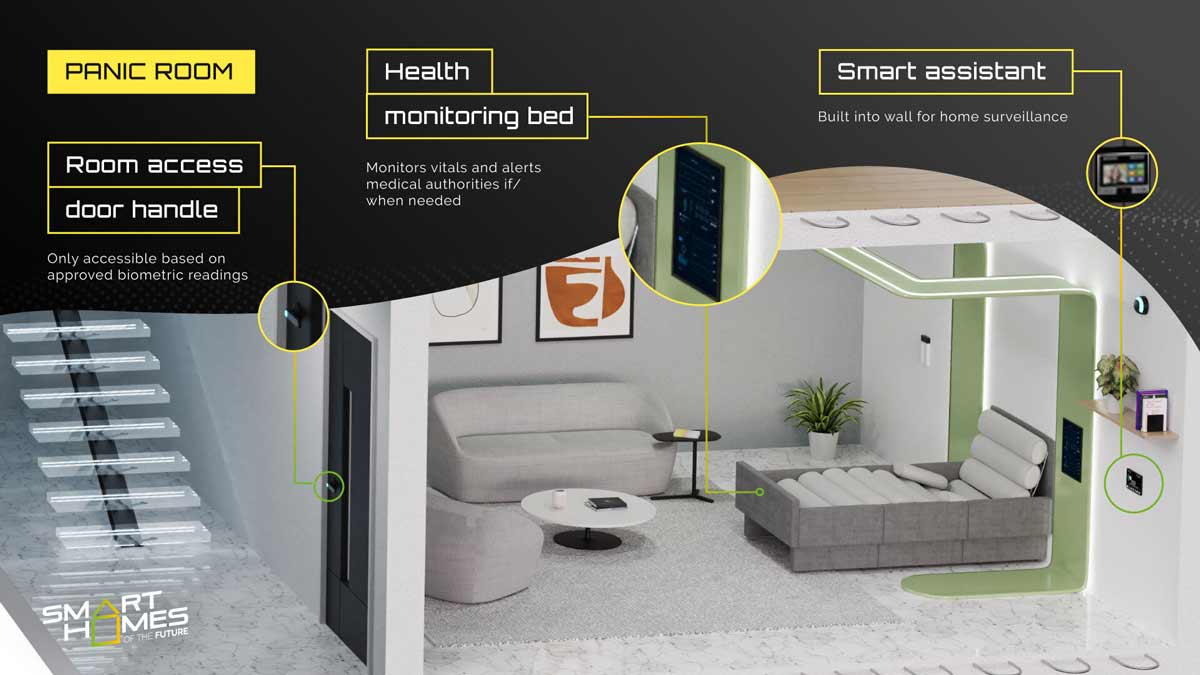
Perfect Home Assistant Control Panel, video intercom, smart switch all in one device #smarthome #iot
IoT and Health & Wellness — Creating a Safer, Healthier Home
The Growing Role of IoT in Personal Well-being
Health and wellness have become central priorities for modern homeowners. Beyond traditional medical devices, IoT technology is now transforming the very spaces where we live — monitoring air quality, tracking vital signs, ensuring safe environments, and even encouraging healthier habits. This integration fosters not only physical well-being but also mental and emotional balance.
Key IoT Innovations Enhancing Home Health
1. Indoor Air Quality Monitors
Poor indoor air quality can cause allergies, respiratory problems, and general discomfort. IoT air quality sensors detect:
-
Particulate matter (PM2.5, PM10)
-
Volatile organic compounds (VOCs)
-
Carbon dioxide (CO2) levels
-
Humidity and temperature
Connected devices automatically trigger air purifiers or humidifiers and send alerts if air quality dips below healthy levels, creating a safer living environment.
2. Smart Water Quality Sensors
Water contamination risks are mitigated by IoT sensors that monitor:
-
pH levels
-
Hardness
-
Presence of heavy metals or bacteria
Homeowners receive real-time data and can schedule filtration or purification maintenance, ensuring safe water for drinking and cooking.
3. Sleep Trackers and Smart Beds
Smart mattresses and sleep monitors track:
-
Sleep duration and quality
-
Heart rate and breathing patterns
-
Room temperature and noise levels
They provide personalized insights and suggestions, helping improve sleep hygiene — critical for overall health.
4. Connected Fitness Equipment
From smart treadmills to interactive yoga mats, IoT fitness gear offers:
-
Real-time coaching and feedback
-
Integration with health apps and wearables
-
Progress tracking and motivation
This encourages an active lifestyle within the comfort of your home.
5. Fall Detection and Emergency Alerts
For seniors or those with health risks, IoT devices can:
-
Detect falls via wearable sensors or floor-based systems
-
Automatically alert caregivers or emergency services
-
Monitor vital signs continuously
This technology provides peace of mind and supports independent living.
6. Smart Lighting for Mental Health
Lighting influences mood and circadian rhythms. IoT systems that adjust:
-
Brightness
-
Color temperature (warmer tones in evening, cooler in daytime)
can reduce stress, enhance focus, and support natural sleep cycles.
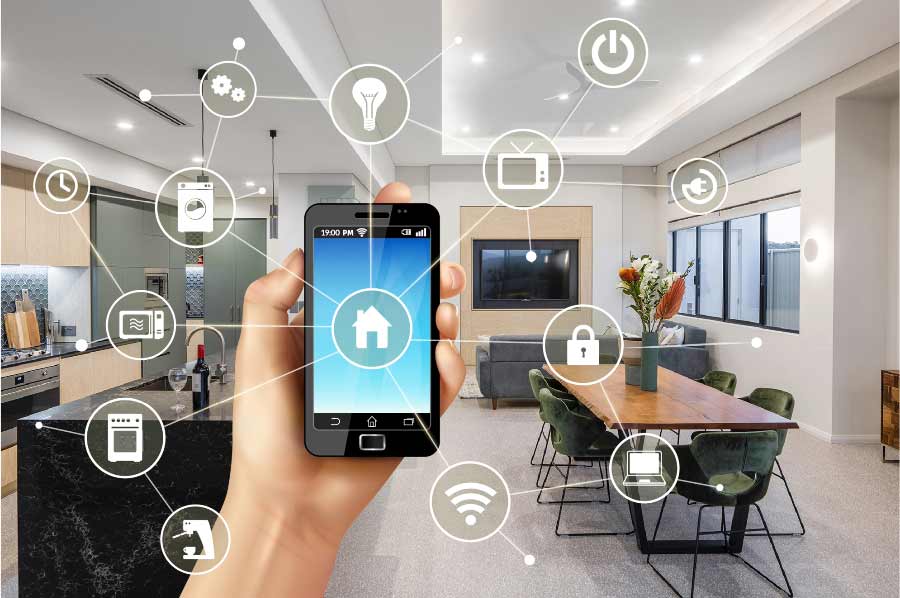
Collage-Smart-Homes-JAYANTHI-V-BIT-1-1
Integrating Health Data Securely
A major concern with health-related IoT devices is data privacy. Manufacturers increasingly implement strong encryption and compliance with health data regulations like HIPAA to protect sensitive information.
Homeowners should:
-
Choose reputable brands.
-
Regularly update device software.
-
Understand data sharing policies.
Benefits of Health-Focused Smart Homes
-
Proactive health monitoring and alerts.
-
Personalized wellness recommendations.
-
Enhanced safety for vulnerable individuals.
-
Improved indoor environment quality.
-
Support for healthy routines and habits.
Real-Life Impact: A Healthier Home Environment
Consider a family with young children and elderly grandparents. IoT air quality sensors detect rising pollen and VOC levels, activating purifiers automatically. Smart lighting adjusts throughout the day to support the family’s natural rhythms, and fall detection devices monitor grandparents’ safety. Collectively, these technologies foster a safer, healthier, and more harmonious household.
Challenges and Future Directions
-
Continued advances in sensor accuracy and reliability.
-
Greater integration with healthcare providers.
-
Ethical questions about data ownership and use.
-
Expanding accessibility to make smart health solutions affordable for all.
IoT is not just about convenience or security — it’s about creating homes that nurture health and wellness, enhancing quality of life in profound ways.
The Future of IoT in Home Living — Trends and Innovations to Watch
The Rapid Evolution of Smart Homes
The Internet of Things is evolving at an unprecedented pace. What began as simple connected gadgets has blossomed into a sophisticated ecosystem that is transforming how we interact with our living spaces. As technology advances, new trends and innovations are poised to redefine smart home living even further — bringing more intelligence, integration, and personalization than ever before.
Key Trends Shaping the Future of IoT in Homes
1. Artificial Intelligence (AI) and Machine Learning Integration
The next generation of smart home devices will harness AI to:
-
Predict user behavior with greater accuracy.
-
Optimize energy use and comfort dynamically.
-
Provide proactive maintenance alerts before issues arise.
-
Enhance security by detecting unusual patterns and potential threats.
-
Enable natural language processing for more intuitive voice and gesture control.
AI will turn passive devices into proactive helpers, anticipating needs before you even ask.
2. Edge Computing and Local Processing
Rather than relying solely on cloud servers, more IoT devices will process data locally (on the “edge”):
-
Reducing latency for faster responses.
-
Enhancing privacy and security by limiting data transmission.
-
Allowing offline operation when internet connectivity is lost.
This shift will make smart homes more reliable and private.
3. Enhanced Interoperability and Open Standards
One major challenge today is the fragmentation of smart home ecosystems. The future promises:
-
Wider adoption of open standards allowing devices from different brands to work seamlessly.
-
Improved cross-platform integrations via unified hubs and protocols.
-
Simplified user experiences eliminating complex setups and compatibility headaches.
This will enable truly cohesive and customizable smart homes.
4. Expanded Use of 5G and Beyond
The rollout of 5G networks will:
-
Provide ultra-fast, low-latency connectivity to support countless IoT devices simultaneously.
-
Enable more sophisticated applications like real-time HD video monitoring and augmented reality (AR) interfaces.
-
Support remote management and maintenance of smart homes from anywhere.
Faster networks will unlock new possibilities in home automation.
5. Biometric and Gesture Controls
Future smart homes will feature advanced input methods such as:
-
Facial recognition for personalized access and preferences.
-
Voice biometrics for secure and intuitive control.
-
Gesture recognition enabling touchless interaction with devices.
-
Integration with wearables for seamless control tied to your physical presence.
These technologies will make interacting with your home more natural and secure.
6. Smart Homes as Health Hubs
Building on current health-focused IoT, future homes will:
-
Integrate with telemedicine platforms for remote health consultations.
-
Monitor a wider range of vital signs and environmental factors continuously.
-
Employ predictive analytics to identify early warning signs of health issues.
-
Offer personalized wellness coaching based on lifestyle data.
Smart homes will evolve into comprehensive health and wellness centers.
7. Energy Independence and Sustainability
With rising environmental awareness, IoT will facilitate:
-
Integration with renewable energy sources like solar panels and home batteries.
-
Intelligent energy storage and distribution to optimize self-consumption.
-
Participation in smart grids and demand response programs to reduce environmental impact.
-
Automated water conservation and waste management systems.
These advancements will help homeowners achieve greener, more sustainable living.
8. Enhanced Security with Blockchain and Zero-Trust Models
Emerging security frameworks will:
-
Use blockchain technology to create tamper-proof logs and decentralized device authentication.
-
Implement zero-trust security models where every device and user is continuously verified.
-
Prevent unauthorized access and protect user data from breaches.
Security innovations will build stronger trust in smart home technologies.
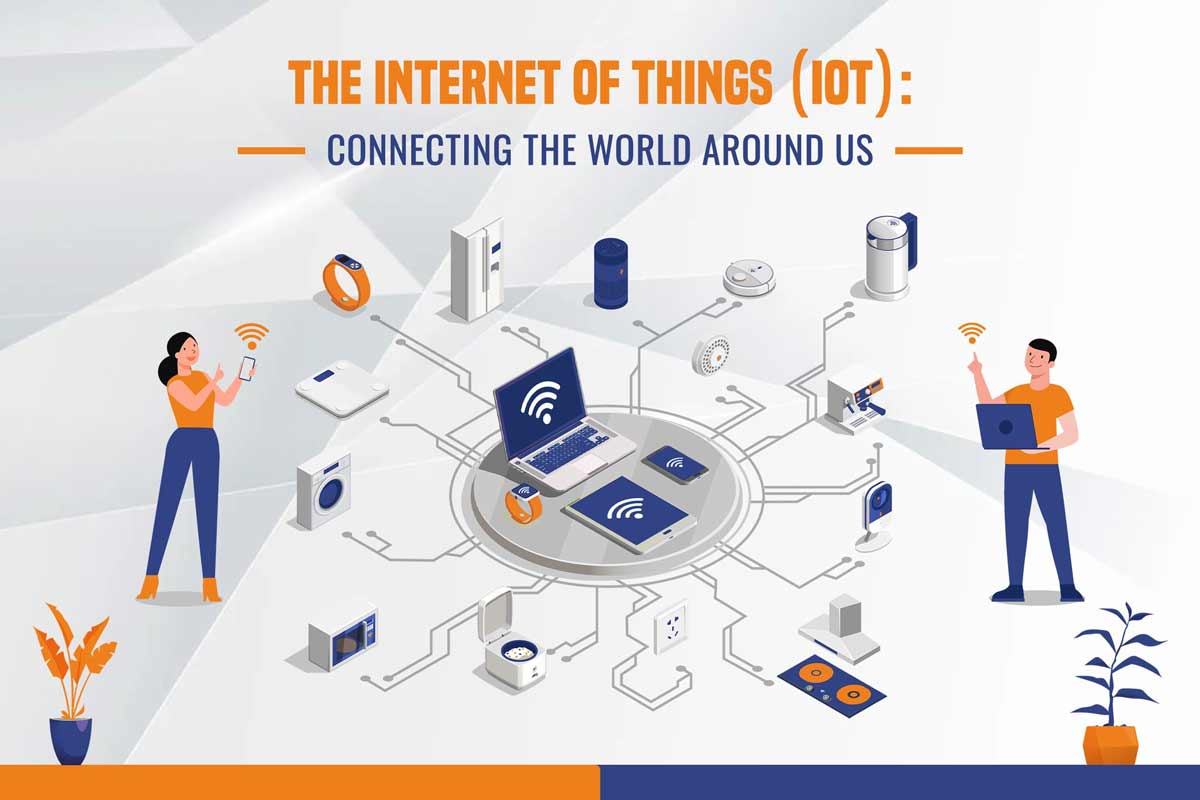
optimizer-learnow-the-internet-of-things
Challenges to Overcome
Despite exciting prospects, several challenges remain:
-
Affordability and accessibility to ensure smart homes benefit all demographics.
-
Privacy concerns requiring transparent policies and user control.
-
Regulatory frameworks to govern interoperability, data security, and consumer rights.
-
Keeping pace with rapid technological change to avoid obsolescence.
Addressing these will be critical to realizing the full potential of IoT homes.
Looking Ahead: The Smart Home of Tomorrow
Imagine homes that:
-
Automatically adapt to your mood and health needs.
-
Communicate seamlessly with your city infrastructure.
-
Support aging in place with minimal human intervention.
-
Offer immersive augmented reality experiences integrated with real-world environments.
The smart home will no longer be a luxury but a vital, integrated part of everyday life, enhancing comfort, security, health, and sustainability.
Conclusion
From humble connected devices to intelligent ecosystems, the Internet of Things is revolutionizing home living in remarkable ways. Staying informed about emerging trends and innovations will empower you to build a future-proof smart home that continually adapts and grows with your needs.
Practical Tips for Transitioning Your Home to Smart Living
Why Transitioning to a Smart Home Matters
Moving from a traditional home to a smart home can seem overwhelming, but with thoughtful planning and practical steps, anyone can enjoy the benefits of IoT-enabled living. A gradual, strategic approach helps minimize costs, avoids compatibility issues, and maximizes long-term value.
Step 1: Assess Your Needs and Priorities
Begin by identifying:
-
Which areas of your home could benefit most from automation? (Security, lighting, energy, wellness, entertainment?)
-
What problems or inefficiencies do you want to solve?
-
Your budget for initial and ongoing investments.
-
Your comfort level with technology and willingness to learn new systems.
This clarity will guide your purchase and setup decisions.
Step 2: Start Small and Expand Gradually
Rather than overhauling your entire home at once, start with a few foundational devices, such as:
-
A smart speaker or hub (Amazon Echo, Google Nest Hub, Apple HomePod).
-
Smart lighting in key rooms.
-
Smart plugs or switches to automate existing devices.
As you gain confidence, add more devices and integrate systems.
Step 3: Prioritize Compatibility and Interoperability
Select devices that:
-
Support widely used platforms (Amazon Alexa, Google Assistant, Apple HomeKit).
-
Adhere to open standards like Matter or Zigbee.
-
Can easily connect and communicate with each other.
This reduces headaches caused by incompatible gadgets and fragmented ecosystems.
Step 4: Secure Your Smart Home Network
Security is critical. Protect your smart home by:
-
Using a strong, unique Wi-Fi password.
-
Setting up a dedicated network (guest network) for IoT devices.
-
Regularly updating device firmware.
-
Disabling unused features and remote access where possible.
-
Considering additional hardware security like firewalls or VPNs.
Step 5: Optimize Automation with Scenes and Routines
Create personalized automation rules to simplify daily life:
-
Schedule lights to turn on/off at sunset/sunrise.
-
Trigger thermostat adjustments when leaving or arriving home.
-
Automatically lock doors and arm security systems at night.
-
Receive alerts for unusual activity or device malfunctions.
Start with simple routines and expand complexity as you learn.
Step 6: Educate Yourself and Use Support Resources
Take advantage of:
-
Online tutorials and forums.
-
Manufacturer support and FAQs.
-
Community groups and social media channels.
-
Experimentation with device apps and settings.
Understanding your smart home’s capabilities empowers you to fully harness its potential.
Step 7: Integrate Voice Control and Mobile Apps
Voice assistants make smart homes more accessible:
-
Set up voice commands for common actions.
-
Use smartphone apps for remote monitoring and control.
-
Combine voice and app controls for flexibility.
Make sure all household members learn basic commands and app navigation.
Step 8: Plan for Future Upgrades
Technology evolves quickly. To future-proof your smart home:
-
Choose devices with regular software updates.
-
Prefer modular systems allowing easy component swaps.
-
Stay informed about new standards and products.
-
Budget for periodic upgrades and expansions.
This mindset keeps your home current and functional long-term.
Step 9: Balance Convenience with Privacy
Be mindful about:
-
What personal data your devices collect.
-
How and where data is stored.
-
Permissions granted to apps and services.
-
Adjusting privacy settings to your comfort level.
A secure smart home respects your privacy while delivering convenience.
Step 10: Enjoy the Benefits and Share with Others
Once your smart home is set up:
-
Explore new use cases and automations.
-
Monitor energy and cost savings.
-
Enhance comfort, safety, and health.
-
Share insights and tips with friends and family to encourage smarter living.
Your smart home journey is ongoing — keep experimenting and adapting.

internet of things
Real-Life Example: A Beginner’s Smart Home Transition
Jessica wanted to improve home security and comfort without a massive upfront cost. She started by installing a smart video doorbell and a few smart bulbs connected to a voice assistant. Over six months, she added smart plugs, a thermostat, and security sensors, gradually creating a cohesive ecosystem that saves energy and provides peace of mind — all manageable from her smartphone.
Conclusion
Transitioning your home to a smart home doesn’t require you to be a tech expert or spend a fortune overnight. By assessing your needs, starting small, focusing on compatibility and security, and learning as you go, you can build an intelligent, responsive home tailored to your lifestyle.
Troubleshooting Common Smart Home Issues and Maintaining Your IoT Ecosystem
Why Maintenance and Troubleshooting Matter
Smart homes rely on interconnected devices and networks that require ongoing care to function smoothly. Proactive troubleshooting and maintenance can prevent frustration, ensure security, and extend the life of your smart home ecosystem.
Common Smart Home Issues and How to Fix Them
1. Devices Not Connecting or Losing Connection
Symptoms: Devices appear offline or fail to respond.
Possible Causes:
-
Weak Wi-Fi signal or interference.
-
Router overload or configuration issues.
-
Device firmware out of date.
-
Power issues.
Solutions:
-
Move devices closer to the router or install Wi-Fi extenders.
-
Restart your router and smart devices.
-
Check for and install firmware updates.
-
Ensure devices are properly powered and batteries charged.
-
Reduce Wi-Fi congestion by limiting connected devices.
2. Voice Assistant Misunderstandings or Failures
Symptoms: Voice commands are ignored or misunderstood.
Possible Causes:
-
Background noise or unclear speech.
-
Device microphone issues.
-
Network delays.
-
Language or regional settings mismatch.
Solutions:
-
Speak clearly and minimize background noise.
-
Check microphone permissions and test device microphones.
-
Restart the voice assistant device.
-
Verify language and regional settings in the app.
3. Automation and Routine Failures
Symptoms: Scheduled tasks don’t run or behave unexpectedly.
Possible Causes:
-
Incorrect automation rules or conditions.
-
Device offline or unresponsive.
-
Conflicting automations.
-
App or firmware bugs.
Solutions:
-
Review and simplify automation rules.
-
Ensure all devices involved are online.
-
Disable conflicting or overlapping routines.
-
Update apps and device firmware.
-
Recreate routines if persistent issues occur.
4. Security and Privacy Concerns
Symptoms: Suspicious activity alerts, unexpected device behavior, or privacy worries.
Possible Causes:
-
Weak or default passwords.
-
Outdated software with vulnerabilities.
-
Unauthorized access or hacking attempts.
-
Insecure network settings.
Solutions:
-
Use strong, unique passwords and enable two-factor authentication if available.
-
Regularly update all devices and apps.
-
Monitor device logs and alerts.
-
Set up a separate IoT network for smart devices.
-
Review and adjust privacy settings.
5. Integration and Compatibility Problems
Symptoms: New devices won’t integrate or control via hubs or voice assistants.
Possible Causes:
-
Device not compatible with your ecosystem.
-
Firmware or app versions out of sync.
-
Network or protocol mismatches.
Solutions:
-
Verify compatibility before purchasing new devices.
-
Keep firmware and apps updated.
-
Consult manufacturer support or forums for known issues.
-
Use universal hubs or bridges if necessary.
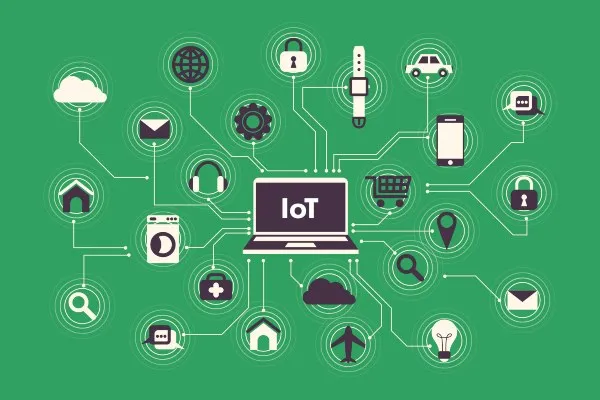
iot-devices_cover
Best Practices for Smart Home Maintenance
Regular Firmware and Software Updates
-
Keep all devices, apps, and hubs updated to fix bugs, improve performance, and patch security vulnerabilities.
Network Health Checks
-
Monitor Wi-Fi performance and latency.
-
Restart routers periodically.
-
Segment smart devices on a separate network or VLAN for added security.
Device Health Monitoring
-
Check device battery levels and replace when low.
-
Inspect physical device condition (cables, sensors).
-
Reboot devices occasionally to clear memory and refresh connections.
Backup and Documentation
-
Keep a record of device passwords, network details, and automation settings.
-
Back up smart home configurations where possible.
Privacy Audits
-
Periodically review permissions granted to apps and devices.
-
Disable unnecessary features like always-on microphones or cameras.
-
Understand what data is collected and shared.
When to Seek Professional Help
Sometimes, issues may be beyond simple troubleshooting:
-
Persistent network or connectivity problems.
-
Complex integrations involving multiple vendors.
-
Advanced security concerns or suspected breaches.
-
Custom smart home setups with specialized hardware.
In these cases, consulting a professional smart home technician or service provider can save time and ensure safety.
Summary Checklist for Smooth Smart Home Operation
| Maintenance Task | Frequency | Notes |
|---|---|---|
| Firmware & app updates | Monthly or as released | Critical for security and performance |
| Wi-Fi and network restart | Quarterly | Helps resolve connectivity issues |
| Device battery check | Monthly | Replace batteries to avoid downtime |
| Review automation routines | Quarterly | Ensure all routines still meet your needs |
| Privacy and security audit | Biannually | Adjust settings and passwords as needed |
Conclusion
Maintaining a smart home ecosystem requires ongoing attention, but by understanding common issues and following best practices, you can enjoy a reliable, secure, and seamless smart living experience. With regular upkeep, your home will continue evolving alongside the technology — keeping you connected, comfortable, and protected.
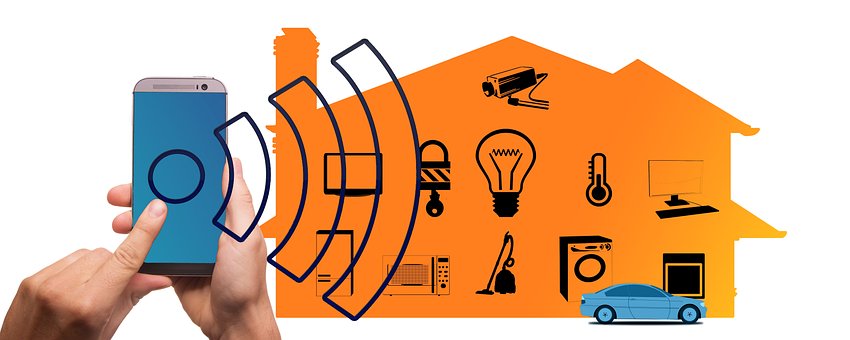
smart-homes-impact-of-internet-of-things-iot-and-how-it-helps-us-shape-our-lives
The Economic and Environmental Impact of IoT in Modern Homes
How IoT Transforms Household Economics
Smart home technologies offer more than convenience—they can significantly impact household finances. By automating and optimizing various aspects of home management, IoT devices help reduce costs, increase efficiency, and even enhance property value.
Energy Savings and Cost Reduction
Smart thermostats, lighting systems, and appliances allow homeowners to monitor and control energy consumption in real time:
-
Smart Thermostats: Adjust heating and cooling based on occupancy, weather, and personal preferences, leading to energy savings of up to 15-20%.
-
Smart Lighting: Automated lighting schedules and motion sensors reduce electricity use by turning off lights when rooms are unoccupied.
-
Smart Plugs and Appliances: Enable scheduling or remote shutoff, preventing energy waste from devices left on unnecessarily.
Water Conservation
IoT-enabled irrigation controllers and leak detectors help minimize water waste:
-
Smart irrigation systems adjust watering schedules based on soil moisture and weather forecasts, saving up to 30% of water usage.
-
Leak sensors alert homeowners immediately, preventing costly water damage and high utility bills.
Maintenance Cost Reduction
Predictive maintenance and alerts from smart appliances and systems reduce unexpected repair costs:
-
Early warnings for HVAC system inefficiencies or appliance malfunctions allow timely interventions.
-
Smart smoke and carbon monoxide detectors can prevent hazardous incidents and costly damages.
Property Value and Market Appeal
Homes equipped with integrated smart systems tend to have higher market values and attract tech-savvy buyers:
-
Enhanced security, convenience, and energy efficiency features are strong selling points.
-
According to industry reports, smart home upgrades can increase property value by 5-10%.
Environmental Benefits of Smart Homes
IoT-enabled homes contribute positively to environmental sustainability by promoting efficient resource use and reducing carbon footprints.
Reduced Energy Consumption and Carbon Emissions
By optimizing energy use, smart homes help lower greenhouse gas emissions:
-
Automated heating and cooling reduce unnecessary energy consumption.
-
Smart lighting and appliances prevent electricity waste.
-
Integration with renewable energy sources (solar panels, battery storage) maximizes clean energy use.
Water Resource Management
Smart irrigation and leak detection contribute to better water management:
-
Precision watering techniques minimize runoff and water wastage.
-
Leak alerts prevent water loss and associated environmental damage.
Waste Reduction
Smart home devices can reduce waste in multiple ways:
-
Smart refrigerators track food inventory and expiration dates, reducing food waste.
-
Automated systems prevent overuse of resources like detergent or cleaning supplies.
Broader Economic Impact and Job Creation
The rise of smart home technology stimulates economic growth and creates jobs across sectors:
-
Manufacturing and Retail: Increased demand for IoT devices and smart appliances fuels production and sales.
-
Installation and Maintenance Services: Growing need for skilled technicians and support staff.
-
Software Development: Expansion of apps and platforms for smart home control.
-
Energy and Utility Companies: New business models focused on smart grid integration and demand response.
Potential Challenges and Considerations
Despite economic and environmental benefits, IoT adoption also presents challenges:
-
Upfront Costs: Initial investment can be high for full smart home integration.
-
E-Waste: Increasing device turnover may contribute to electronic waste if not managed properly.
-
Energy Use of Devices: While saving energy overall, some devices continuously consume power.
-
Privacy and Security Risks: Potential economic costs from data breaches or hacks.
Addressing these challenges involves conscious consumer choices, improved device design, recycling programs, and robust cybersecurity measures.
Case Study: Energy Savings in a Smart Home Community
A recent study of a suburban smart home community demonstrated:
-
Average annual energy savings of 18% per household.
-
Water usage reduction of 25% due to smart irrigation.
-
Decrease in emergency maintenance calls by 30%.
-
Increased homeowner satisfaction and property values.
This example illustrates the tangible benefits IoT brings at a community scale.
Conclusion
IoT technology is not only transforming how we live but also how we manage household expenses and environmental impact. By improving energy and water efficiency, lowering maintenance costs, and adding property value, smart homes represent a financially and ecologically savvy investment. As adoption grows, the cumulative effect on sustainability and the economy will become even more significant — making IoT a key driver of the future smart, green home revolution.

Smart-Home-Threats-and-Countermeasures
Future Trends and Innovations Shaping the Smart Home Landscape
Smart home technology is evolving rapidly. To stay ahead, it’s crucial to understand upcoming trends, innovations, and their potential benefits. This section presents a comprehensive look at the future, emphasizing key developments supported by data tables.
Table 1: Emerging Smart Home Technologies and Their Projected Adoption Rates (2025-2030)
| Technology | Description | Projected Adoption by 2025 (%) | Projected Adoption by 2030 (%) | Key Benefits |
|---|---|---|---|---|
| AI-Driven Home Assistants | AI with natural language understanding for deeper interaction | 60% | 85% | Personalized automation, predictive control |
| 5G Connectivity | High-speed, low-latency network enabling better device integration | 40% | 80% | Faster data transfer, enhanced real-time control |
| Smart Energy Storage | Home batteries paired with solar panels or grid | 25% | 70% | Energy independence, cost savings |
| IoT-Enabled Health Devices | Sensors monitoring health, sleep, and wellness | 35% | 75% | Improved health tracking and alerts |
| Augmented Reality (AR) Interfaces | AR for home control and virtual design visualization | 10% | 50% | Enhanced user experience and design planning |
| Blockchain for IoT Security | Decentralized authentication to improve security | 5% | 40% | Increased data privacy and device security |
| Smart Water Management | Advanced water usage tracking and recycling systems | 20% | 55% | Water conservation and sustainability |
Table 2: Projected Energy Savings by Future Smart Technologies
| Smart Technology | Estimated Energy Savings (%) | Example Application | Environmental Impact |
|---|---|---|---|
| AI-Optimized HVAC Systems | 25-30% | Adaptive heating/cooling based on behavior | Reduced carbon footprint |
| Smart Appliances | 15-20% | Self-regulating refrigerators and washers | Less energy and resource consumption |
| Dynamic Lighting Systems | 20-25% | Circadian rhythm lighting adaptation | Improved health and reduced waste |
| Energy Storage Integration | 30-40% | Battery + solar panel combo | Grid load balancing and renewable use |
Table 3: Innovations in Smart Home Security (2025-2030)
| Innovation | Description | Benefits | Challenges |
|---|---|---|---|
| AI-Powered Video Analytics | Real-time threat detection with facial recognition | Enhanced security, false alarm reduction | Privacy concerns, data storage |
| Biometric Access Control | Fingerprint, iris scan, and voice recognition | Improved access security and convenience | Implementation cost, potential false rejects |
| Drone Surveillance | Autonomous drones monitoring property perimeters | Expanded monitoring coverage | Regulatory issues, privacy implications |
| Blockchain Identity Management | Secure decentralized user identity management | Tamper-proof access logs | Complexity, adoption hurdles |
Table 4: Smart Home Market Growth Forecast (2025-2030)
| Region | Market Size 2025 (Billion USD) | Expected CAGR (Compound Annual Growth Rate) | Market Size 2030 (Billion USD) |
|---|---|---|---|
| North America | 40 | 12% | 70 |
| Europe | 30 | 11% | 52 |
| Asia-Pacific | 35 | 15% | 70 |
| Latin America | 8 | 14% | 16 |
| Middle East & Africa | 5 | 13% | 10 |
Table 5: Consumer Preferences for Smart Home Features (Survey 2024)
| Feature | Percentage of Respondents Who Prioritize It (%) |
|---|---|
| Energy efficiency and savings | 78 |
| Security and surveillance | 74 |
| Voice control integration | 68 |
| Health and wellness monitoring | 60 |
| Home automation customization | 55 |
| Interoperability across brands | 50 |
Table 6: Key Challenges Facing Future Smart Homes and Possible Solutions
| Challenge | Description | Potential Solution |
|---|---|---|
| Device Interoperability | Fragmented protocols and standards | Adoption of universal standards (Matter, Zigbee) |
| Privacy and Data Security | Increased data flow increases hacking risks | End-to-end encryption, blockchain authentication |
| Energy Consumption of Devices | Continuous power use of always-on devices | Energy-efficient chipsets, solar-powered IoT devices |
| Complexity for End Users | Difficult setup and management | AI-driven assistants, simplified UI/UX design |
| E-Waste and Device Lifecycle | Short device lifespans lead to waste | Modular devices, recycling programs |
Table 7: Predicted Cost of Smart Home Installation Over Time
| Year | Average Installation Cost (USD) | Main Factors Driving Cost Changes |
|---|---|---|
| 2023 | 7,500 | Early adoption, limited vendors |
| 2025 | 5,200 | Increased competition, mass production |
| 2030 | 3,000 | Technology maturation, DIY kits, economies of scale |
Table 8: The Role of AI in Smart Homes: Current vs Future Capabilities
| Capability | Current Status (2024) | Expected Status (2030) |
|---|---|---|
| Voice Recognition | Basic commands, limited context | Conversational AI with emotional understanding |
| Predictive Automation | Rule-based triggers | Fully adaptive systems learning user habits |
| Security Threat Detection | Basic anomaly alerts | Real-time threat prediction and prevention |
| Energy Optimization | Manual or scheduled adjustments | Autonomous optimization with grid interaction |
| Health Monitoring | Limited wearable integration | Continuous health diagnostics and alerts |
Conclusion
The future of smart homes is vibrant and transformative. With AI, 5G, blockchain, and innovative sustainability solutions accelerating adoption, smart homes will become increasingly intuitive, secure, and environmentally responsible. These advancements promise significant economic benefits and a better quality of life — making IoT not just a convenience, but a fundamental pillar of modern living.
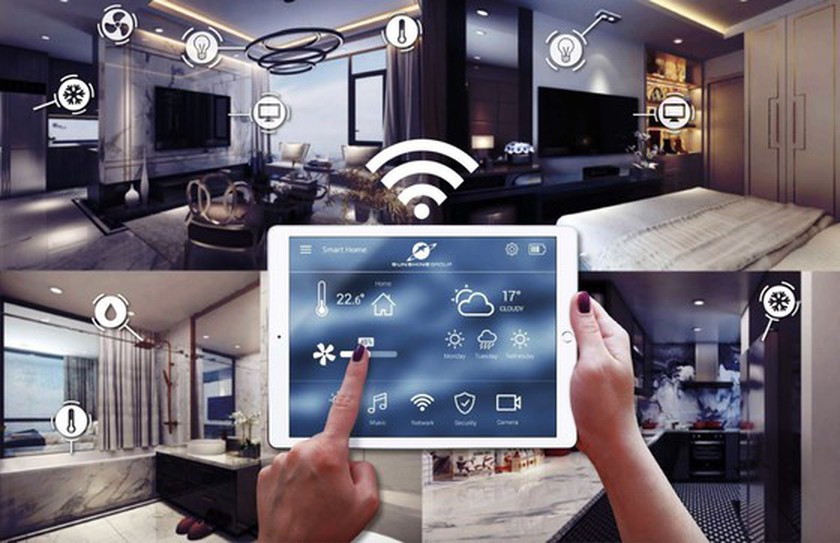
tech_smart-homes-enjoying-promising-future-2
Summary: Embracing the Smart Home Revolution
The journey from traditional “dumb” homes to intelligent, connected living spaces powered by IoT is reshaping the very fabric of how we live. From enhancing convenience and security to driving substantial energy savings and promoting sustainability, smart home technologies offer unmatched benefits. The rapid advancements in AI, connectivity, and automation signal that our homes will continue evolving into increasingly intuitive and personalized environments.
Adopting IoT devices today means investing in a future where your home works smarter for you — anticipating your needs, safeguarding your family, conserving precious resources, and reducing expenses. While challenges like privacy and interoperability remain, ongoing innovation promises to address these hurdles effectively.
As the smart home ecosystem matures, its impact will extend beyond individual households to communities, economies, and the environment — truly making IoT a cornerstone of 21st-century living.
Frequently Asked Questions (FAQ)
Q1: Why should I invest in smart home technology now?
A: Early adoption allows you to enjoy energy savings, enhanced security, and convenience. As prices drop and compatibility improves, smart homes will become the new standard, increasing property value and future-proofing your living space.
Q2: What factors should I consider when choosing IoT devices for my home?
A: Key considerations include compatibility with existing devices, ease of use, security features, brand reputation, and energy efficiency. Look for devices supporting common standards like Matter for smoother integration.
Q3: How secure are smart home devices?
A: Security varies by manufacturer, but modern devices often include encryption, regular updates, and multi-factor authentication. It’s important to keep devices updated and use strong, unique passwords on your home network.
Q4: Can IoT devices help reduce my environmental footprint?
A: Absolutely. Smart thermostats, lighting, water management, and energy storage systems optimize resource use, significantly cutting energy and water waste and lowering greenhouse gas emissions.
Q5: How difficult is it to set up a fully automated smart home?
A: While some setups require technical skills, many smart devices are designed for easy installation and offer guided setup apps. Professional installation is an option for complex systems.
Q6: What is the expected lifespan of smart home devices?
A: Lifespans vary, typically ranging from 3 to 10 years depending on the device type and quality. Modular and upgradable designs are emerging to extend usability and reduce e-waste.
Q7: How will future innovations change smart homes?
A: Advances in AI, 5G, blockchain, and AR interfaces will make smart homes more autonomous, secure, and immersive, with devices that learn habits, predict needs, and provide seamless user experiences.


